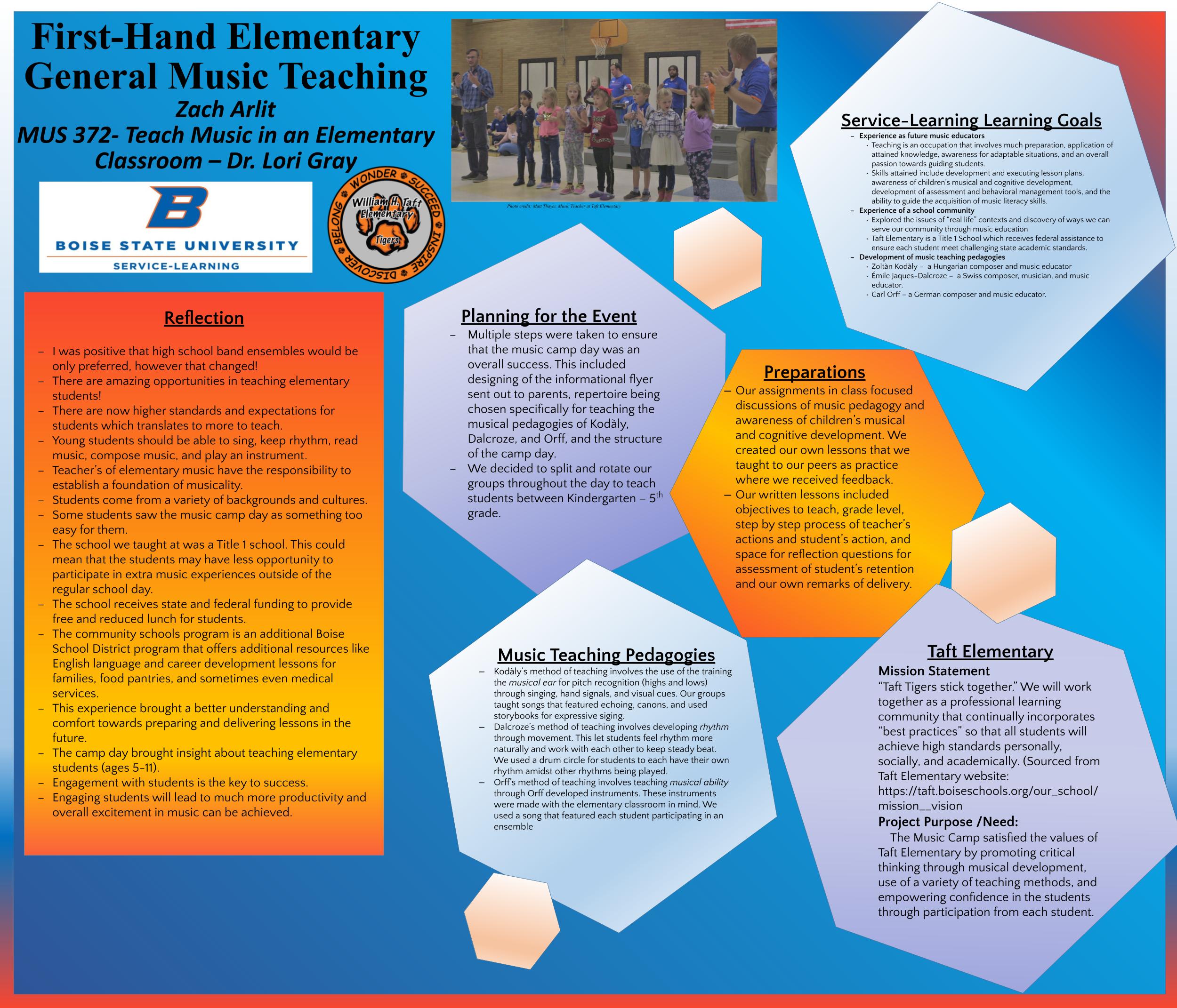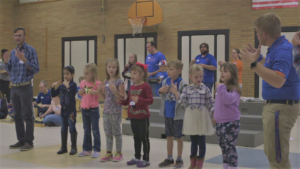Zach Arlit
Dr. Lori Gray – MUS 372
Taft Elementary

Introduction
Learning Goals:
- Experience as future music educator: Teaching is an occupation that involves much preparation, application of attained knowledge, awareness for adaptable situations, and an overall passion towards guiding students. Skills attained include development and executing lesson plans, awareness of children’s musical and cognitive development, development of assessment and behavioral management tools, and the ability to guide the acquisition of music literacy skills.
- Experience of a school community: Explored the issues of “real life” contexts and discovery of ways we can serve our community through music education.
Taft Elementary is a Title 1 School which receives federal assistance to ensure each student meet challenging state academic standards. - Development of music teaching pedagogies: Zoltàn Kodàly – a Hungarian composer and music educator Émile Jaques-Dalcroze – a Swiss composer, musician, and music educator. Carl Orff – a German composer and music educator.
Reflection
- I was positive that high school band ensembles would be only preferred, however that changed!
- There are amazing opportunities in teaching elementary students!
- There are now higher standards and expectations for students which translates to more to teach.
- Young students should be able to sing, keep rhythm, read music, compose music, and play an instrument .
- Teacher’s of elementary music have the responsibility to establish a foundation of musicality.
- Students come from a variety of backgrounds and cultures.
- Some students saw the music camp day as something too easy for them.
- The school we taught at was a Title 1 school. This could mean that the students may have less opportunity to participate in extra music experiences outside of the regular school day.
- The school receives state and federal funding to provide free and reduced lunch for students.
- The community schools program is an additional Boise School District program that offers additional resources like English language and career development lessons for families, food pantries, and sometimes even medical services.
- This experience brought a better understanding and comfort towards preparing and delivering lessons in the future.
- The camp day brought insight about teaching elementary students (ages 5-11).
- Engagement with students is the key to success.
- Engaging students will lead to much more productivity and overall excitement in music can be achieved.

Community Partner: Taft Elementary
Mission Statement:
“Taft Tigers stick together.” We will work together as a professional learning community that continually incorporates “best practices” so that all students will achieve high standards personally, socially, and academically. (Sourced from Taft Elementary website: https://taft.boiseschools.org/our_school/mission__vision
Project Purpose:
The Music Camp satisfied the values of Taft Elementary by promoting critical thinking through musical development, use of a variety of teaching methods, and empowering confidence in the students through participation from each student.

Planning for the Event
Multiple steps were taken to ensure that the music camp day was an overall success. This included designing of the informational flyer sent out to parents, repertoire being chosen specifically for teaching the musical pedagogies of Kodàly, Dalcroze, and Orff, and the structure of the camp day.
We decided to split and rotate our groups throughout the day to teach students between Kindergarten – 5th grade.
Preparations
Our assignments in class focused discussions of music pedagogy and awareness of children’s musical and cognitive development. We created our own lessons that we taught to our peers as practice where we received feedback.
Our written lessons included objectives to teach, grade level, step by step process of teacher’s actions and student’s action, and space for reflection questions for assessment of student’s retention and our own remarks of delivery.
Music Teaching Pedagogies
- Kodàly’s method of teaching involves the use of the training the musical ear for pitch recognition (highs and lows) through singing, hand signals, and visual cues. Our groups taught songs that featured echoing, canons, and used storybooks for expressive siging.
- Dalcroze’s method of teaching involves developing rhythm through movement. This let students feel rhythm more naturally and work with each other to keep steady beat. We used a drum circle for students to each have their own rhythm amidst other rhythms being played.
- Orff’s method of teaching involves teaching musical ability through Orff developed instruments. These instruments were made with the elementary classroom in mind. We used a song that featured each student participating in an ensemble